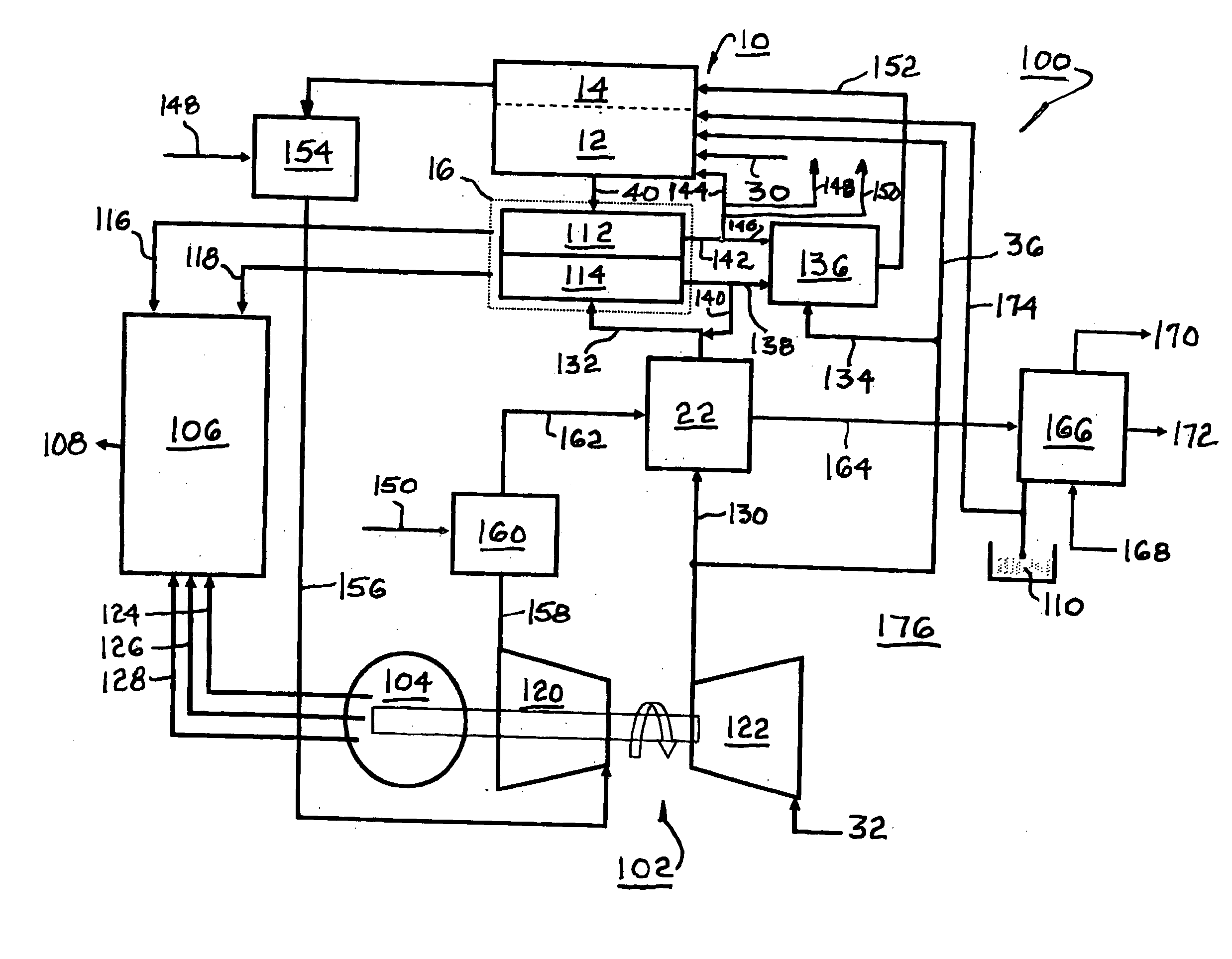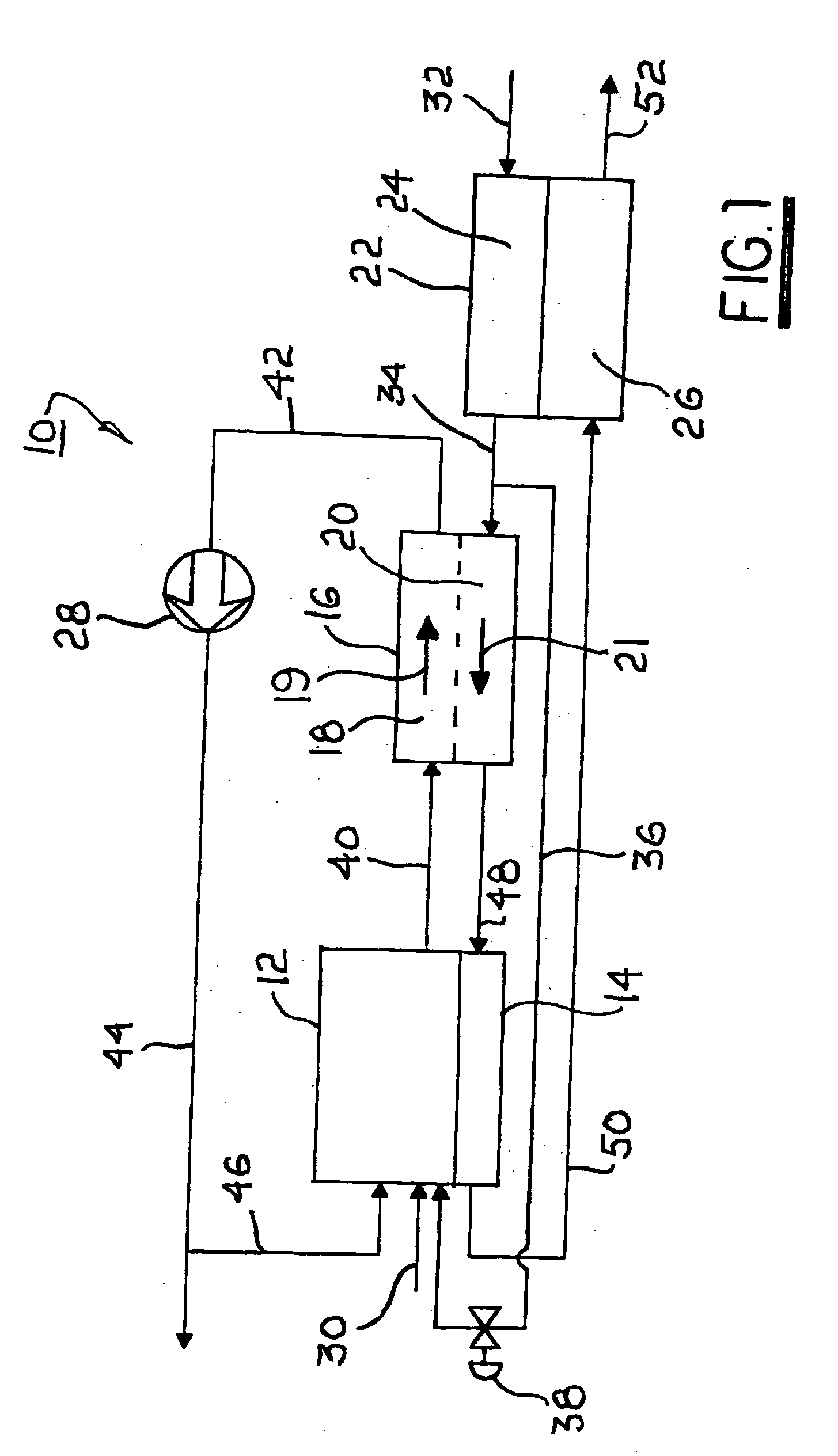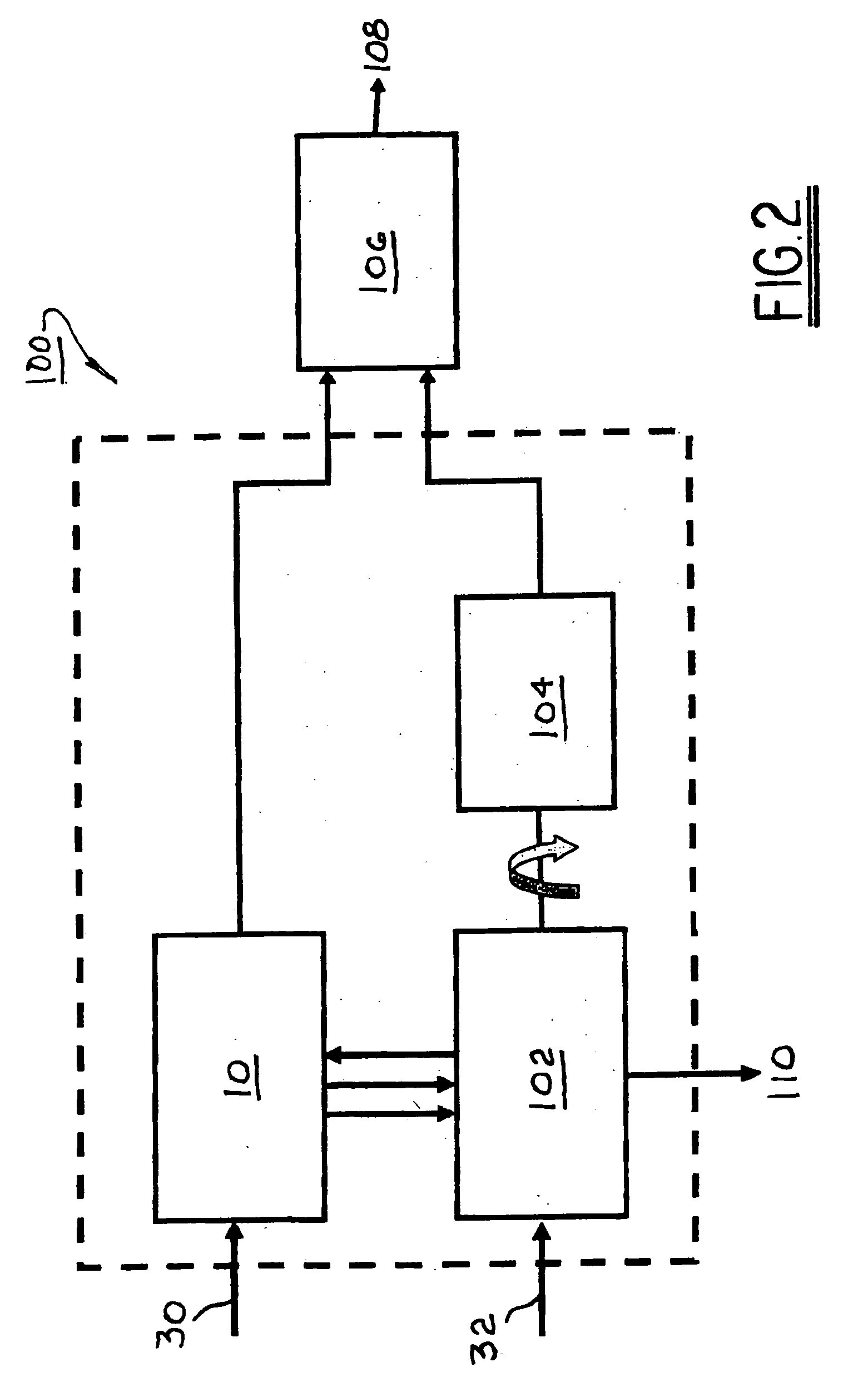Hybrid power generating system combining a fuel cell and a gas turbine
a hybrid power generation and fuel cell technology, applied in the direction of electrochemical generators, electric propulsion mounting, machines/engines, etc., can solve the problems of wasting fuel in conventional combustion, and reducing the efficiency of the system, so as to prevent overheating of elements within the stack
- Summary
- Abstract
- Description
- Claims
- Application Information
AI Technical Summary
Benefits of technology
Problems solved by technology
Method used
Image
Examples
Embodiment Construction
[0026] Referring to FIG. 1, a high temperature fuel cell system 10 includes components known in the art of solid-oxide or molten carbonate fuel cell systems. FIG. 1 is not a comprehensive diagram of all components required for operation but includes only those components necessary to understand the apparatus and method in accordance with the invention. Other components not shown will be readily inferred by those of ordinary skill in the art. A hydrocarbon catalytic reformer 12 includes a heat exchanger 14, preferably formed integrally therewith. A fuel cell stack 16 comprises preferably a plurality of individual fuel cell elements connected electrically in series as is known in the art. Stack 16 includes passageways for passage of reformate across the anode surfaces of the stack, the passageways being shown collectively and schematically as passageway 18. Stack 16 also includes passageways for passage of air across the cathode surfaces of the stack, the passageways being shown colle...
PUM
 Login to View More
Login to View More Abstract
Description
Claims
Application Information
 Login to View More
Login to View More - R&D
- Intellectual Property
- Life Sciences
- Materials
- Tech Scout
- Unparalleled Data Quality
- Higher Quality Content
- 60% Fewer Hallucinations
Browse by: Latest US Patents, China's latest patents, Technical Efficacy Thesaurus, Application Domain, Technology Topic, Popular Technical Reports.
© 2025 PatSnap. All rights reserved.Legal|Privacy policy|Modern Slavery Act Transparency Statement|Sitemap|About US| Contact US: help@patsnap.com



